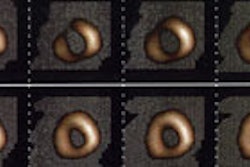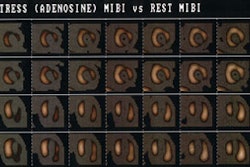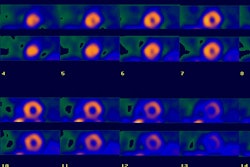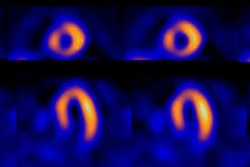Heterogeneity of cardiac sympathetic nerve activity and systolic dysfunction in patients with hypertrophic cardiomyopathy.
Shimizu M, Ino H, Yamaguchi M, Terai H, Hayashi K, Nakajima K, Taki J, Mabuchi H.
Cardiac sympathetic nerve activity is changed in patients with hypertrophic cardiomyopathy (HCM). However, the relationship between heterogeneity of this activity and systolic left ventricular dysfunction in patients with HCM is not well established. This study was performed to evaluate the sympathetic nerve activity in various cardiac regions and to investigate the relationship between cardiac dysfunction and heterogeneity of the cardiac sympathetic nerve activity in patients with HCM. METHODS: Cardiac sympathetic nerve activity was evaluated in 25 patients with HCM and 10 control subjects using planar imaging and SPECT by 123I-metaiodobenzylguanidine (MIBG) myocardial scintigraphy. With planar 123I-MIBG imaging, the heart-to-mediastinum activity ratios (H/M), at early (20 min) and delayed (3 h) acquisition, and the washout rate were calculated. Polar maps of the left ventricular myocardium were divided into 20 segments, and the dispersion (maximal to minimal values) and SD of uptake and the washout rate in 20 segments were calculated. RESULTS: The early H/M did not differ between the 2 groups. The delayed H/M was significantly lower and the washout rate of the whole heart was significantly higher in the HCM group than those in the control group. In patients with HCM, the delayed H/M, early uptake dispersion, and SD of early uptake showed good correlation with the left ventricular end-diastolic and end-systolic dimensions and the percentage of fractional shortening. A stepwise regression analysis revealed that the SD of early uptake was a powerful determinant for the percentage of fractional shortening in patients with HCM. CONCLUSION: These results suggest that the heterogeneity of regional cardiac sympathetic nerve activity may be correlated with cardiac dysfunction in patients with HCM.



